See some of the world's most active volcanoes on Hawaii's Big Island
Want to hike a hardened lava lake and see the glow of lava? Then make a beeline for the Hawai’i Volcanoes National Park on the Big Island.
The Volcanoes National Park is located in the south east of the Big Island - about 45 minutes drive from the town of Hilo – and is open 24 hours a day. Your first and last stop in the national park should be the Kiluaea Volcano’s Halema’uma’u Crater. Kilueau Volcano has been erupting since 1983 and is one of the world’s most active volcanoes.
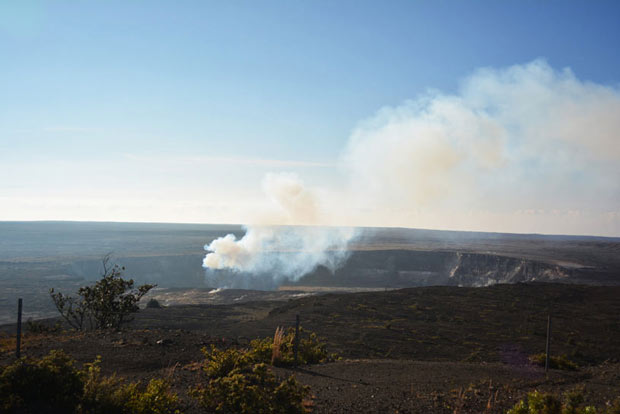
During the day, you can see a plume of volcanic gas from the crater, but at night you can see the bright orange glow of lava at the bottom of the crater. For the best view, go to the viewpoint at the Jaggar Museum. The viewpoint can be visited any time of the day or night.
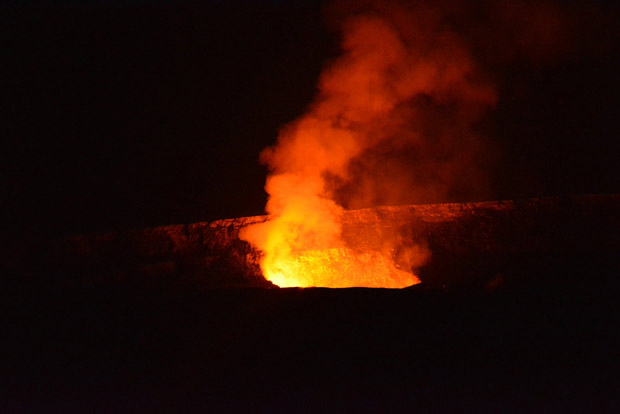
After you’ve had a look at the crater, pull on your runners and head out to one of the many hikes throughout the park. I headed out on the Kiluaea Iki Trail, Devastation Trail and the Sulphur Banks Trail. The Kiluaea Iki Trail is the longest of the three trails I did in the park. It’s a loop walk spanning 6.4km. The trail descends 120 metres through the forest before opening out to a hardened lava lake dating back to a volcanic eruption in 1959.
The expansive hardened lava lake is the highlight of the trail. You can see where the lava flowed on the lake, and in some places cracked. The trail is like a desert land with only a few plants growing and is a fascinating way to get close to a volcanic area.
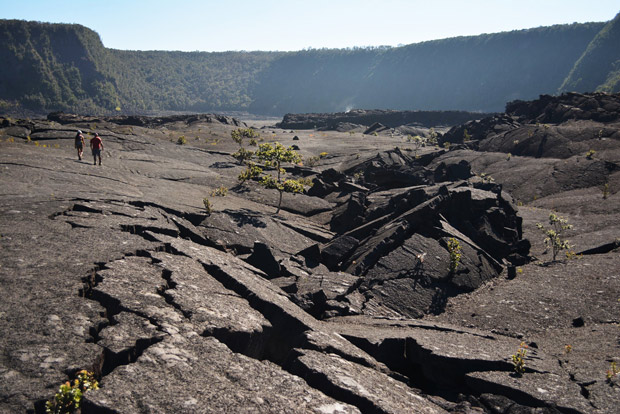
This trail is very exposed during the lava lake section so bring a hat and sunscreen. Be prepared for the humidity as you hike out of the lava lake and back to the carpark. The trail will take about 90 minutes, with some short steep sections.
The Devastation Trail is a short paved path through a barren landscape. The area was buried by cinders in the 1959 volcanic eruption. Another short walk is the Sulphur Banks Trail to see where volcanic gases deposited sulphur crystals. These walks shouldn’t take you much longer than 15-20 minutes return.
Make sure you also check out the Steam Vents for a sauna like experience as steam emits from several volcanic vents just next to the road.
The Thurston Lava Tube is also a must see. The cave like lava tube is estimated to be about 500 years old but was only discovered in 1913. It only takes about five minutes to walk through the cave.
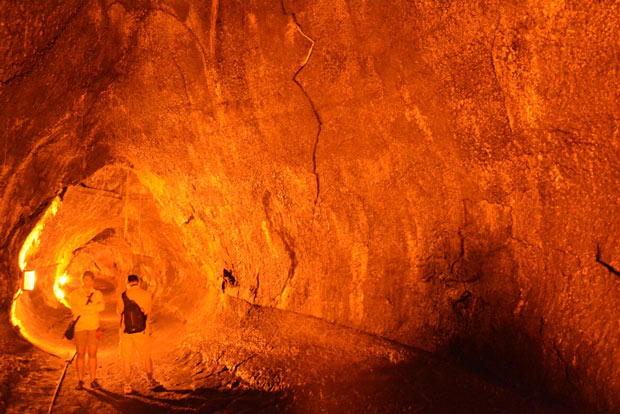
The Thurston Lava Tube is on Crater Rim Drive, which leads to the Chain of Craters Road - a 61km stretch of road through the national park to the sea and a lava flow from 2003. The road also passes several other lava flows and a number of viewpoints over the national park.
Before you head to the park, pick up some water and food in Hilo. There’s no food or drink facilities in the park or after you leave the Hilo area.
Another road trip you can do to get close to a volcano is the drive along the Saddle Road past the Mauna Kea Volcano. You’ll drive past kilometres of hardened lava flows and into a microclimate of fog and rain influenced by the volcano.
Black Sand Beach
For a picturesque black sand beach and the chance to see green sea turtles, head along to the Punalu’u Black Sand Beach. The beach is located about a 45 minute drive south of the Hawai’I Volcanoes National Park.
The beach is fringed with palm trees – the green palm fronds in stark contrast to the black sand. The sand is quite coarse and gets hot in the sun so you’ll probably want to wear your flip flops or sandals on the beach.
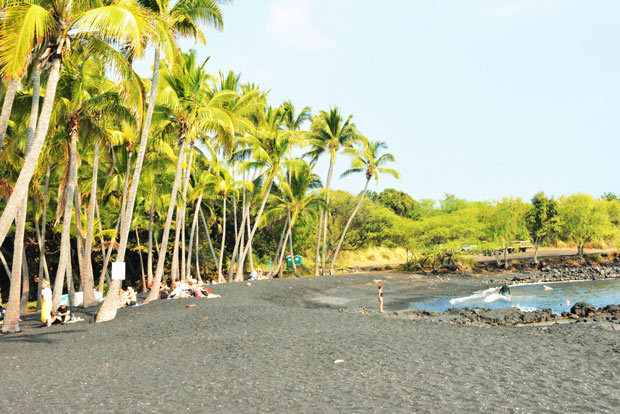
If you’re lucky, you might be able to swim with the turtles here so bring your snorkel. Otherwise you might also see them near the rocks closest to the carpark. Panalu’u is a great spot to spend a couple of hours relaxing under the palm trees or in the water so bring your towel and swimmers.
Things You Should Know:
- To see as much as possible in the Hawai’s Volcanoes National Park, it’s best to hire a car. All major car rental agencies are represented at the airport.
- Entry to the park is $US15 ($NZ 21.50) per car but your pass is valid for three days. Payment by credit card at the ticket booth is preferred. Pick up a map of the park’s trails at the ticket booth, as well as a brochure about the Big Island’s volcanoes.
- Plan to spend at least half a day at the Volcanoes National Park to explore several of the trails. You’ll need the whole day if you plan to drive the Chain of Craters Road to the sea. You might want to plan your trip so you can see the Halema’uma’u Crater both during the day and night.
- Stock up on water and food in Hilo before heading to the national park and the black sand beach. There is no food or drink sold in the park or at the beach. It can get very hot and humid in the park so make sure you bring enough water to get you through a few hours hiking on the trails.
Lisa Owen is a pint-sized Australian following her dreams to travel to as many places as she can, and loves to share her photography, travel hacks, hiking adventures, and food discoveries along the way. At last count, she has travelled to more than 40 countries in between working in public relations and discovering hidden gems in Australia's great outdoors. Instagram: @_thelittleadventurer Facebook: The Little Adventurer Australia
The views, opinions and positions expressed by the author and those providing comments are theirs alone, and are meant as travel inspiration only. They do not reflect the opinions of Cover-More Insurance. You should always read the PDS available from your travel insurance provider to understand the limits, exclusions and conditions of your policy and to ensure any activities you undertake are covered by your policy.